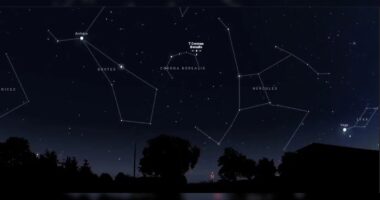An astronaut on the International Space Station (ISS) photographed red sprites, rare bursts of energy that occur above thunderstorms. These brief but massive events, lasting only a millisecond and spanning up to 30 miles, appear as a result of lightning within the storm. Unlike lightning that strikes downwards, red sprites rise into the atmosphere, acting like reverse lightning.
The astronaut, Matthew Dominick, shared the image on X, describing his luck in capturing the phenomenon during a timelapse of a lightning storm off the coast of South Africa. He expressed a desire to learn more about these elusive events.
Red sprites are a type of Transient Luminous Event (TLE) often captured by ISS crew members during Earth timelapses. Instruments like the Atmosphere-Space Interactions Monitor (ASIM) provide researchers with valuable data on these events.
The image sparked excitement among online users, with some noting the impressive vertical height of the red sprites and the potential interaction with oxygen. Others expressed gratitude for the opportunity to see such a rare phenomenon captured from the ISS.






















